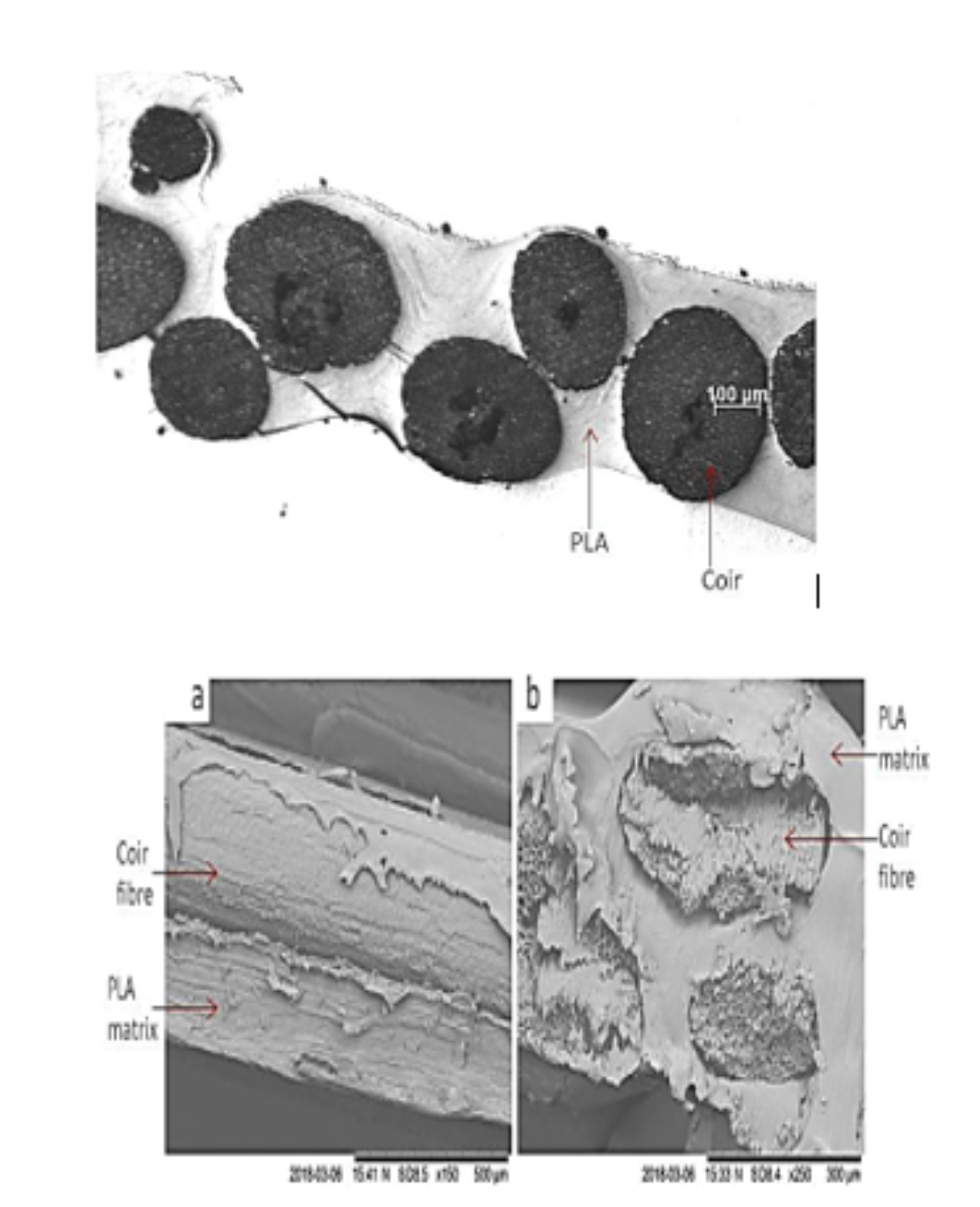Investigations into the tensile properties and microstructural features of Coconut fibre (Coir) reinforced Polylactic acid (PLA) biodegradable composites
Keywords:
PLA, composites; coir; tensile properties; volume fractionAbstract
The study investigated the tensile properties of coconut fibre reinforced Polylactic acid biopolymer. Unidirectional arrays of coir fibres with an average diameter of 0.242 mm and a sample size of about 83 fibres per layer were used to manufacture PLA biodegradable composites by a film stacking technique via hot press. The type A composite was a blend of PLA/PLA/Coir/PLA/PLA while Type B composite was a blend of PLA/PLA/Coir/Coir/PLA/PLA. The manufactured composites were subjected to Instron universal testing machine to characterize their mechanical properties. The tensile strength for composites type A was found to be 11% higher than the tensile strength of composite Type B. However, the Young’s modulus for composite type B was 20% higher than the Young’s modulus for composite type A. Generally, the values of the tensile properties of the coconut fibre reinforced PLA composite was about 40% higher than the values found in literature for coir composites with matrices other than PLA within the studied range. Their microstructures were observed using scanning electron and optical microscopy, the microstructures of the composite samples show the arrangements of the coir fibres within the PLA matrix. Image analysis of the optical micrographs of the components on an 8-bit grey scale revealed volume fractions of fibres within the layers in Type A and Type B as 33% and 24% respectively. The images of the manufactured composites obtained from scanning electron microscope showed some level of fibre pull-out from the matrix.


